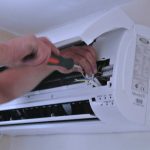Content
- 1 The concept of lack of fusion
- 2 The appearance of porosity
- 3 Cracks
- 4 Other causes of lack of fusion and errors
Lack of weld penetration worsens the technological properties of materials, and is also the reason for the low strength of the connection. This defect includes formations on the surface of the weld, which have a heterogeneous structure. Why is it often the lack of fusion?

The concept of lack of fusion
The following defects are attributed to lack of penetration: hot or cold microcracks or macrocracks, lack of penetration of the suture root, pores visible by the eye and inclusions of various groups.
Most often, a defect is formed at the root of the seam or at the edges between joints. Such a welded joint has reduced performance and resistance to external influences.

The appearance of porosity
The porosity in the compound appears due to the fact that not all bubbles have time to escape from the metal during its working process before it solidifies. The spheres of the bubbles can be microsocial or large 2-3 mm in diameter.

In this case, lack of penetration is due to the occurrence of carbon monoxide and carbon dioxide, due to rust at the ends technological connections and on the wire, as well as due to increased humidity in the flux or in the process of automatic welding.
Cracks
This lack of penetration is very dangerous because of the further possibility of expanding microscopic cracks to enormous sizes. This can occur until the seams break. Cracks are formed due to the rigid bonding of the elements to be boiled, due to the effect of tension inside metal, due to welding at low temperatures, due to the large concentration of seams on a small plot.


Other causes of lack of fusion and errors
Mistakes due to which lack of fusion occur are extensive. The welder can set the current insufficient to weld a specific seam or move the electrode at high speed and intensity. Also, lack of fusion can occur due to the large length of the size range of the arc, due to insufficient slope angle for the edges, due to flaws in the large dull angle at the edges.

Often a lack of fusion occurs due to the inexperience of the welder, when the welder incorrectly moves or matches elements for the edge. Or between the welded edges a small gap is formed, due to which the parts are not tightly in contact. A common mistake is the use of large diameter electrodes that cannot be used at certain stages of welding. Lack of penetration is necessarily formed if slag flows between the edges in the process.



-
 How to make a kitchen on the balcony
How to make a kitchen on the balcony
-
 How to remove wood lice from the bathroom?
How to remove wood lice from the bathroom?
-
 How can you save on heating in a private house
How can you save on heating in a private house
-
 What berries it is time to collect, and which is late
What berries it is time to collect, and which is late
-
 How to equip a narrow bedroom
How to equip a narrow bedroom
-
 How to stylishly paint walls at home
How to stylishly paint walls at home
-
 Wood burning stove
Wood burning stove
-
 How to choose a heated towel rail
How to choose a heated towel rail
-
 An easy way to whiten a bath curtain
An easy way to whiten a bath curtain
-
 Features of repair and damage to the air conditioner
Features of repair and damage to the air conditioner
-
 Aligning walls with a plumb line
Aligning walls with a plumb line
-
 How to fix wallpaper sticking errors
How to fix wallpaper sticking errors
New publications are published daily on our channel in Yandex. Zen
Go to Yandex. Zen

